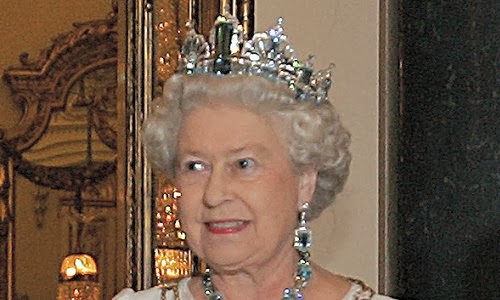 |
| Queen Elizabeth II wears her Brazilian aquamarine parure [1] |
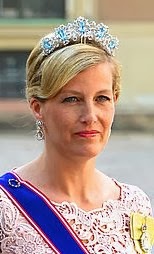 |
| Countess of Wessex [3] |
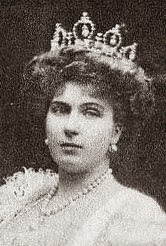 |
| Ena of Spain [6] |
Sparkling Royal Jewels From Around the World
 |
| Queen Elizabeth II wears her Brazilian aquamarine parure [1] |
 |
| Countess of Wessex [3] |
 |
| Ena of Spain [6] |
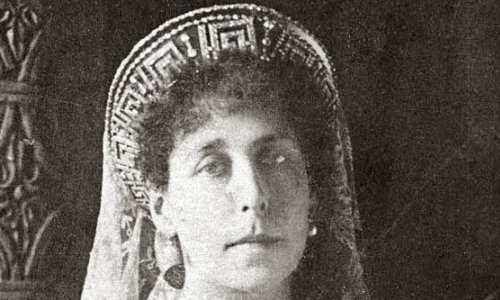 |
| Victoria Melita of Edinburgh (as a Russian grand duchess) wearing her kokosnik, ca. 1913 [1] |
Victoria Melita — who got her unusual middle name because she was born in Malta — was the third child of Prince Alfred, Duke of Edinburgh (and later also Duke of Saxe-Coburg and Gotha; he was a son of Prince Albert and Queen Victoria) and Grand Duchess Maria Alexandrovna of Russia. The princess, who was called “Ducky” by her family, was married twice. Her first marriage to Prince Ernst of Hesse (her first cousin, and the brother of Tsarina Alexandra Feodorovna) was a disaster, and she had to wait until their mutual grandmother, Queen Victoria, died before she could divorce him. Tainted by the scandal, Ducky was a bit of an outcast in royal circles, but she ended up making another royal marriage, this time to a Romanov. Her 1905 wedding to yet another first cousin, Grand Duke Kirill Vladimirovich — the son of Maria Pavlovna the Elder, owner of the famous Vladimir Tiara — caused further outrage, but the pair were in love. Unfortunately, their marriage wasn’t exactly an unqualified success either, but so goes the story of so many royal marriages from a century ago.
Carol and Helen’s marriage was, sadly, just as disastrous as Ernst and Ducky’s had been a generation earlier. But their son, Michael, did end up reigning as Romanian king before finally being compelled to abdicate in 1947. Even though he lost his throne, his family was able to retain this tiara. His wife, Princess Anne of Bourbon-Parma, wore the tiara to their wedding in 1948. Their daughter, Princess Maria, also wore the tiara at her wedding in 1995. Today, the piece is worn most frequently by Michael and Anne’s eldest daughter, Margarita. She often represents her father at European royal events, giving her plenty of opportunities to show off the family’s only remaining heirloom tiara.
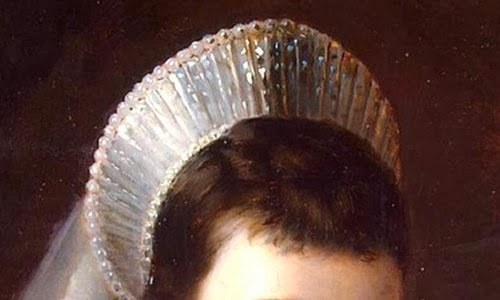 |
| Kokshnik tiara worn by Marie Feodorovna of Russia [1] |
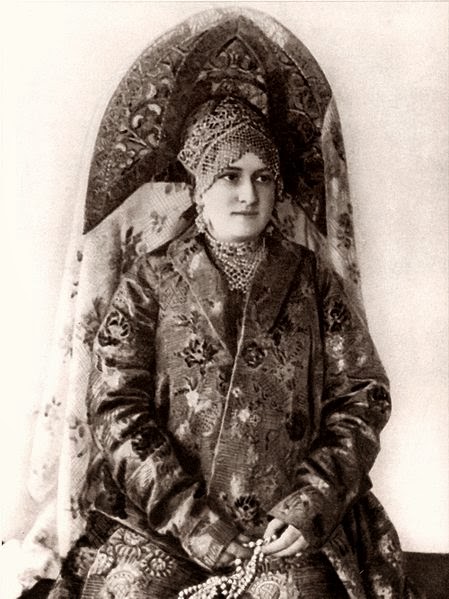 |
| Russian kokoshnik, ca. 1900 [2] |
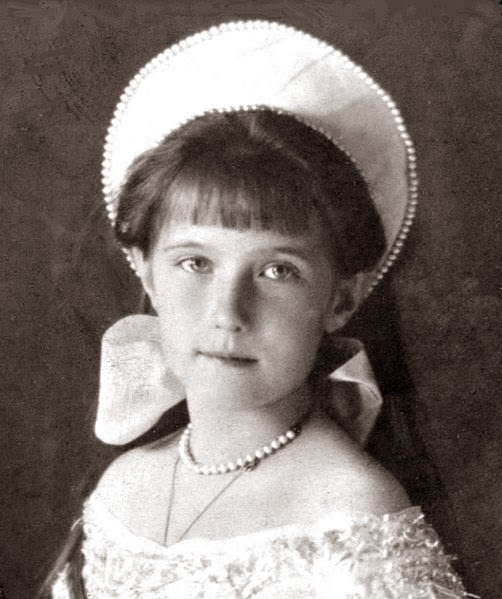 |
| Grand Duchess Anastasia [3] |
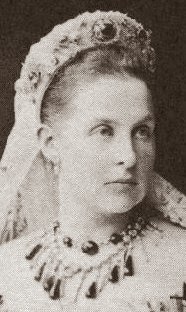 |
| Olga of the Hellenes [5] |
European tiara collections today still include many examples of kokoshnik-shaped tiaras, largely because so many grand duchesses married into various royal families. Queen Olga of the Hellenes, who was born Grand Duchess Olga Constaninovna of Russia, brought an emerald-studded kokoshnik (see the photograph at right) with her to her new country. Although the family has altered the tiara over the years, its current incarnation echoes its original kokoshnik shape. Many Russian grand duchesses received diamond fringe tiaras, which mimicked the shape of kokoshnik headdresses, as a part of their wedding trousseaux; you can see some of those fringe tiaras gracing the heads of their descendants today in countries like Denmark (inherited from Grand Duchess Anastasia Mikhailovna) and Germany (inherited via two Romanovs, Grand Duchess Maria Pavlovna and Grand Duchess Elena Vladimirovna). These halo-esque fringe tiaras were sometimes called tiaras russe because of their links to the Romanovs.
1. Detail of Ivan Kramskoi’s Portrait of Maria Fyodorovna (ca. 1880s); source here.
2. Photograph available via Wikimedia Commons; source here.
3. Photograph available via Wikimedia Commons; source here.
4. More on Queen Alexandra’s kokoshnik tiara can be found at the Royal Collection website.
5. Detail of photograph available via Wikimedia Commons; source here.